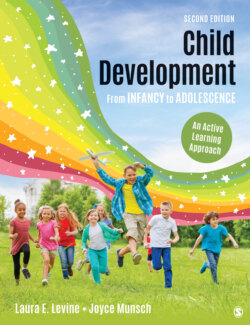Читать книгу Child Development From Infancy to Adolescence - Laura E. Levine - Страница 101
На сайте Литреса книга снята с продажи.
Erik Erikson’s Psychosocial Stages
ОглавлениеFreud had many colleagues who further developed his theory, but one of the most influential was Erik Erikson (1902–1994). Erikson believed that issues of the ego are more important than those linked with the id and that the development of identity is the central issue for children and adolescents. At each stage in his theory, a conflict arises rooted in the social experiences typical at that stage of development. For this reason, Erikson’s (1963) theory is said to describe psychosocial stages (as opposed to Freud’s psychosexual stages). The way in which we resolve each conflict lays the groundwork for the stages of development that follow.
Psychosocial stages: Erikson’s stages that are based on a central conflict to be resolved involving the social world and the development of identity.
Erik Erikson. Erikson was a psychoanalyst who focused more on the role of social issues in development than Freud and who introduced stages of life that continued through adulthood.
Ted Streshinsky Photographic Archive / Contributor via Getty Images
These stages are described briefly in Table 2.1. Here we describe only his first stage as an example. Erikson’s first stage, trust versus mistrust, describes how infants establish trust in the world around them. Infants are totally dependent on the adults who care for them. When caregivers are dependabley and reliably meet the infant’s needs, the infant learns to trust the world and feel safe and secure in it. However, when caregivers are inconsistent in providing care or are emotionally unavailable, the infant develops a sense of mistrust in the world. Of course, none of us have a completely positive or completely negative set of experiences at any of the stages; therefore, we can think of the two possible outcomes of each stage as two sides of a seesaw, with one side higher than the other but both actively in play. The way infants resolve the issue of trust versus mistrust sets the stage for the way they will go on to deal with the next psychosocial stage called autonomy versus shame and doubt as toddlers.
The other important aspect of Erikson’s theory is that he believed development does not stop in adolescence. He went beyond Freud’s stages to add three stages of adulthood, becoming the first theorist to recognize that we continue to grow and develop throughout our lives. You can use Table 2.1 to review and compare Erikson’s eight psychosocial stages and Freud’s five psychosexual stages.
Table 2.1
Sources: Compiled from Kahn (2002) and Erikson (1963).
